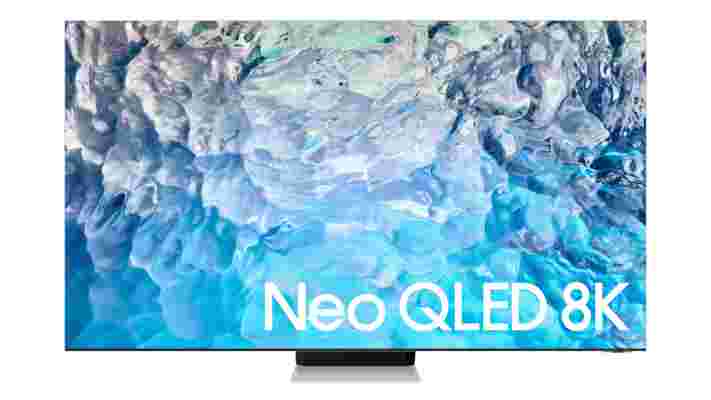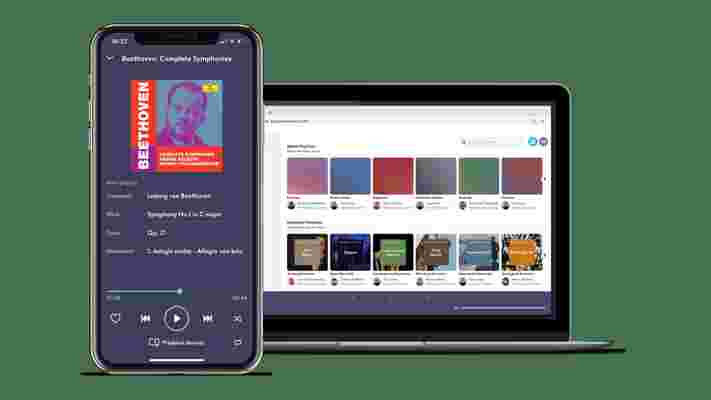In February 2022, Garmin revealed its second-generation line of Instinct sports watches , with heaps of sports tracking modes and extra-long battery life. However, the latest model isn't necessarily the best one for you. We're here to explain all the key differences, so you can choose the Instinct that will fit your needs.
First, it's important to note the price. The basic spec Instinct 2 costs considerably more than the standard first-gen Instinct, and adding extra features like solar glass will bump the price up further still. The original Garmin Instinct might therefore be the best choice you're on a tight budget, and since it's an older device, you're likely to find some generous discounts at third-party retailers like Amazon and Wiggle.
If you have smaller wrists, the Instinct 2 is likely to be a better option. Whereas the original Instinct only came with a 45mm diameter case, the Instinct 2 is also available in a more compact 40mm version.
The Instinct 2 also has a lot more to offer when it comes to sports tracking. Its upgraded heart rate monitor gives more accurate readings, and it has a slew of new workout profiles, as well as multi-sports tracking.
That's only scratching the surface, though – there are also big differences when it comes to battery life. special editions, and everyday smartwatch features. You can scroll down for the full lowdown on the Instinct and Instinct 2, but if you've already made up your mind, we've also tracked down the best prices for both watches eight here:
Watch models
The original Garmin Instinct comes in just one size (45mm), but is available in many different colors and configurations. Alongside the standard version, there's also a solar edition that uses photovoltaic glass to harvest energy and keep its battery topped up.
There are also various special editions available: Camo (which doesn't add any extra features, but has a stylish patterned band and bezel), Tactical (designed for service personnel), Surf (with tide times and a dedicated surf tracking activity), and Exports (which allows you to broadcast your heart rate during streams).

The Garmin Instinct 2 gives you even more options. First of all, you can now choose between 40mm and 45mm case sizes – the smaller of which is well suited to people with slim wrists. Both sizes come in standard and solar versions.
There are also special edition Instinct 2 models. As before, there's a Surf edition, but this is now available in both 40mm and 45mm sizes, and you can choose to have it with or without solar glass.
The Tactical and Camo editions are only available in 45mm. The Tactical model has solar glass, but the Camo doesn't.
There's no version of the Instinct 2 designed for esports. Instead, Garmin has added a new watch called the Instinct 2 Dezl (pronounced 'diesel') Edition, which is specifically for truckers. It can connect to your truck's Garmin navigation system, display your health stats on its high-res screen, and remind you to take regular breaks.
| Edition | 45mm case | 40mm case | Standard glass | Solar glass |
|---|---|---|---|---|
| Standard | Yes | Yes | Yes | Yes |
| Surf | Yes | Yes | Yes | Yes |
| Tactical | Yes | No | No | Yes |
| Camo | Yes | No | Yes | No |
| Dezl | Yes | No | Yes | No |

Price
The original Garmin Instinct starts at $299.99 / £269.99 / AU$399 for the standard non-solar edition. The most expensive watch in the range is the Instinct Solar Tactical Edition for $449.99 / £359.99 / AU$799.
You can often find the original Instinct range discounted at third-party retailers like Amazon. We've found the best deals on the original Instinct and Instinct Solar for you here:
The Garmin Instinct 2 range is more expensive than the original lineup. It starts at $349.99 / £299.99 / AU$549 for the standard non-solar model. The most expensive watch in the line is the Instinct 2 Solar Tactical Edition, which retails at $499.99 / £429.99 / AU$749.
Design
Watches in the Garmin Instinct range are designed to be tough and durable rather than flashy. All Instinct and Instinct 2 models come with a fiber-reinforced polymer case and silicone band – though you can replace this with a woven, leather or metal strap if you buy one separately.
All Instinct watches have a similar case design, but as mentioned above, the Instinct 2 also has a more compact 40mm variant (the Instinct 2S). All watches are controlled using a set of five physical buttons around the edge of the case, which can be easily operated with wet hands or while wearing gloves. There's no touchscreen.
Watches in both lines are available in a wide range of colors, but the Instinct 2 comes in some livelier hues including Poppy, Electric Lime, and Neo Tropic (a kind of seafoam blue).

Display
All Garmin Instinct watches have monochrome memory-in-pixel (MiP) displays, with a small cut-out at the top right that displays contextual information while you're navigating through menus, and can show a statistic such as current step count, heart rate, or date on the watch's home screen. There's no visible difference between standard and solar glass.
This display is less striking than the AMOLED screens of watches like the Venu 2, but it's easy to read in all lighting conditions and has more contrast than the color MiP display of the Garmin Fenix 7 .
The original Garmin Instinct has a resolution of 128 x 128 pixels. The 45mm Instinct 2 has a resolution of 176 x 176mm, and the 40mm Instinct 2S has a resolution of 156 x 156 pixels.
Battery life
Long battery life is a key selling point of the Instinct series, and the Instinct 2 range last even longer between charges. The solar editions can keep running indefinitely with sufficient sunlight, but as with any smartwatch, the real world battery life will depend on which features you use.
The table below shows the quoted battery life for the 45mm standard and solar editions, assuming all-day wear with three hours per day outside in 50,000 lux conditions. Battery life is slightly shorter for the Instinct 2S due to its smaller battery.
| Mode | Instinct | Instinct Solar | Instinct 2 | Instinct 2 Solar |
|---|---|---|---|---|
| Smartwatch | 14 days | 54 days | 28 days | Unlimited |
| Battery saver smartwatch | n/a | Unlimited | 65 days | Unlimited |
| GPS | 16 hours | 38 hours | 30 hours | 48 hours |
| UltraTrac / Max battery GPS | 40 hours | 145 hours | 70 hours | 370 hours |
At a launch presentation for the Instinct 2, Garmin said that unlimited battery life is a realistic possibility for someone like a lifeguard who works outdoors.
Smartwatch features
Watches in the Instinct and Instinct 2 series are designed with outdoor sports in mind, but they also have a decent set of smartwatch features for everyday use.
All Instinct watches will let you receive smartphone notifications, plus incoming call and text alerts on your wrist. You can use your watch to control music on your phone, and to find your phone if it goes missing (or vice versa).
The Instinct 2 does a lot more, though. For example, you can download third-party apps, faces, and data fields for it through Garmin Connect IQ – something that's not possible with the original Garmin Instinct.
Garmin Instinct 2 Solar watches also offer Garmin Pay, so you can make contactless purchases and pay for public transport where it's supported.
There are no LTE watches in the Instinct or Instinct 2 series though, so you won't be able to download apps or transfer data without a Bluetooth connection to your phone.
There's also no microphone, so you won't be able to answer calls or use your phone's voice assistant from your wrist (for that you'll need the Garmin Venu 2 Plus instead). However, Android users can use their Instinct watch to reject calls with a text response.
Fitness tracking
Watches in the original Instinct series have an impressive array fitness tracking tools, but the Instinct 2 makes several big upgrades. First of all, there's a new optical heart rate monitor, plus an SpO2 sensor for tracking changes in blood oxygen saturation. The Instinct 2 also has more advanced sleep tracking, plus respiration tracking.
The original Instinct series has a wide range of workout tracking modes, and caters particularly well to cyclists, runners, and swimmers. There are sports modes for outdoor road running, trail running, treadmill running, road cycling, indoor cycling, mountain biking, pool swimming, and open water swimming.
When you're in the gym, there are also profiles for strength, cardio and elliptical training, stair stepping, floor climbing, indoor rowing, and yoga. Hiking, climbing, mountain biking, skiing, snowboarding, cross-country skiing, stand-up paddleboarding, rowing, kayaking, and Jumpmaster (for skydiving) are also available.
The Instinct 2 adds profiles for indoor track running, indoor climbing, bouldering, fishing, hunting, gravel biking, cyclocross, e-biking, and many other activities. The Instinct 2 also has multi-sports tracking, so if you're taking part in a duathlon or triathlon, you can switch between modes with a press of a button rather than ending your activity and restarting.
Watches in the Instinct 2 range are legal for golf tournaments too, and include tools like a digital scorecard, yardage to layups/doglegs, hazards and course targets, and green view with manual pin position.
Samsung 8K Neo QLED TVs 2022: everything we know so far about the new models
Samsung has finally unveiled a new lineup of 8K Neo QLED TVs for 2022.
Samsung has shown off the new QN700B, QN800B, and the QN900B 8K Neo QLEDS, offering us three new ways for us to upgrade our home cinemas to include ultra-sharp 8K images. If you're currently rocking a 4K TV then an 8K offering would deliver four times more pixels than you're used to; while those still stuck with HD would see a 16 times more sharp image if you upgrade to 8K.
Plus, thanks to Samsung's impressive Neo QLED tech you can expect bright images with fairly decent contrast in darker scenes. The contrast won't be quite as good as standard OLED TV - or one of Samsung's rumored QD-OLED screens - but there are still plenty of great reasons to opt for the QN700B, QN800B or the QN900B over anything else.
Below we've rounded up everything we know about Samsung's 8K Neo QLED lineup for 2022 so read on to find out about what we expect to be some of the year's best TVs.
Samsung 8K Neo QLED TV price : Not yet confirmed but we expect Samsung's 2022 8K Neo QLED TVs will cost a little more than the 8K models it released last year.
Samsung 8K Neo QLED TVrelease date : April 6th if you're in the UK and Europe, release dates in the US and Australia haven't been confirmed
Samsung 8K Neo QLED TV design : Expect barely noticeable bezels and sizes of 55, 65, 75, and 85-inch depending on your choice of model.
Samsung 8K Neo QLED TV picture quality : You'll get a crisp 8K image with bright colors and decent dark contrast thanks to the impressive panels on these TVs.
Samsung 8K Neo QLED TV audio performance : This year, Samsung's Neo QLED TVs will come with multi-directional speakers and Dolby Atmos support.
Samsung 8K Neo QLED TV gaming : Some models will support a max refresh rate of 144Hz and a gaming hub is launching soon.
Right now, we don't have any Samsung 8K Neo QLED TV price details yet, however, we likely won't have to wait too much longer to find out as preorders will go live on March 16.
That said, we can look back at what Samsung's 2021 lineup of QLEDs launched to get an idea of what price we'll likely see this year.

The cheapest Neo QLED currently, the QN85A, starts at $1,299 (around £900 / AU$1,650) for a 55-inch size, but the largest 85-inch size of the QN900 8K QLED costs you a whopping $8,999 (around £6,500 / AU$11,700).
Expect to see Samsung's 2022 lineup fall nearer the upper end of this scale - especially if you're after a sizable TV. The upgrade to an 8K resolution from 4K won't come cheap.
Much like what we saw last year, we expect the smaller Samsung QN700B 8K QLED will be the most budget-friendly, followed by the QN800B and QN900B respectively - with the 85-inch QN900B likely to cost at least much as Samsung''s most expensive 2021 set.
We’ll have to wait and see what Samsung has planned for us though.
Announced via the official Samsung Newsroom website, all three of Samsung's 2022 8K Neo QLED TVs will launch on April 6, with pre-orders starting from March 16. You'll also be able to pre-register your interest in a pre-order from February 22, if you're dead set on purchasing one of Samsung's latest Neo-QLEDs for yourself.
Well, in Europe and the UK at least. Unfortunately, the US and Australian launch details aren't yet set in stone.
However, we expect that a global launch won't be far behind April 6 date for those in Europe. We'll have to wait and see what Samsung announces, but hopefully, we'll all be able to enjoy its new Neo QLED TVs soon.
The most impressive entries in Samsung's 2022 TVs will come with 8K and Neo QLED, that's amazing... but what does that actually mean?
Starting off with the resolution, 8K means that the TV will have a resolution that's four times higher than 4K. Rather than being 3840 x 2160 pixels, it's twice as long horizontally and vertically (7680 x 4320) - resulting in four times as many pixels overall.
The benefit of this more dense pixel count is that images will become even more sharp and clear than what we've seen before. Plus, Samsung's TVs will have upscaling tech built-in - so if you watch something in 4K the TV will automatically sharpen it so that it looks more like an 8K image. This won't be quite as good as viewing a native 8K image but will still be a step up from using a 4K screen.
As for the Neo QLED part, this is the type of TV panel used in the TVs. Neo QLED is an evolution of Samsung’s existing QLED technology, which stands for ‘quantum dot LED’. These kinds of TVs offer more bright and vivid colors than standard LCDs or OLEDs.
Neo QLED changes things up a little by using a Mini LED backlight - made up of tens of thousands of tiny LEDs - for vastly more precise brightness control. It's not quite as good as an OLED but will offer users a more happy medium between OLEDs and QLEDs.

On top of all that these TVs will come with support for HDR10+ and 14-bit HDR mapping. This should add even more detail to particularly dark and bright areas of the image. Meanwhile, Sharp Adaptive Light control will be attempt to output the highest quality, most accurate picture possible on a moment-to-moment basis.
The TL;DR here is you can expect some very good image performance from Samsung's 8K Neo QLEDs in 2022.
Unfortunately, while Samsung is introducing new smaller Neo OLED TVs in its 4K QN90B line up - adding 43 and 50-inch sizes - its 8K offerings will remain just as big as ever.
The Samsung QN700B will give users the choice between 55, 65, and 75-inch models, while the QN800B and QN900B will be available in 65, 75, and 85-inch sizes.
Additionally, it looks like the TV bezel will be almost completely absent save for a sliver around the top and sides - with a slightly thicker bar at the bottom. If you're looking for a TV that offers zero distractions from what's on-screen, this year's Samsung QLEDs could be for you.
As for the smart TV features, you can expect Samsung's Tizen OS to make a comeback this year.
This easy-to-use and speedy OS is one of the best out there as it cuts down on clutter, offers a great blend of customization options, and quick access to your most recently used apps.
The only downside is that the universal search feature has been rather hit-or-miss in the past, however with these premium sets coming out we might see some upgrades come to the operating system to fix up some of these issues.
While we'd always recommend you pair a TV with one of our picks from the best soundbars of 2022 for a premium home cinema experience, Samsung's 8K lineup could be capable of some impressive audio on their own.
The new Neo QLEDs will come equipped with multi-directional speakers that, for the first time, will support Dolby Atmos surround sound. This is excellent news even if you decide to opt for a soundbar or another external sound system. That's because the TV's Dolby Atmos codec support will allow you to get the most out of your sound system - if it also supports Atmos that is.
The multi-directional (in particular the up-firing speakers) will give you less of a reason to buy a soundbar though. This design of sound system should allow Samsung's new 2022 Neo QLEDs to produce an amazing audio performance all on their own .
We don't yet know how powerful the new speakers will be, but Samsung is promising something special with its upcoming 8K TVs - so we expect we'll be impressed.

Samsung's 2022 Neo QLED TVs look like they could be a huge win for gamers looking to get the most out of their Xbox Series X or PS5 .
Later in 2022, the TVs will be updated with Samsung Gaming Hub , a dedicated interface that makes cloud gaming services like Nvidia GeForce Now and Google Stadia available to play directly from the TV with no external devices needed.
Plus, on the hardware side, you can expect low input lag (which Samsung 4K TVs have traditionally been fantastic at) and support for a 144Hz refresh rate on some models to get that all-important 4K@120HZ gameplay. Or maybe even 8K@60Hz if you have the right rig.
It's not clear which of its TVs will get this high refresh rate support - but we expect it'll come to its premium 8K sets. We'll have to wait for the official specs for each model and size to be sure though.
Spotify has bought more podcasting platforms - but is it neglecting the music?
Spotify has acquired two more podcasting companies as it continues its push to dominate the world of spoken word content.
The music streaming service has announced that it's buying both Chartable and Podsights, which are two of the biggest podcast marketing and ad attribution companies, according to The Verge .
Chartable is a podcast analytics platform that allows publishers to "grow their podcast audiences through promotional attribution and audience insight tools", while Podsights is an advertising measurement service that helps advertisers to measure how well their ads are performing on podcasts .
In a blog post , Spotify said that the acquisitions will help companies that advertise through podcasts to better measure how ads perform, and help publishers to expand their listenership and grow their businesses.
While these are Spotify's first acquisitions this year, they're the latest in a long line of buyouts in the spoken word space, with the company saying it believes the "opportunity for digital audio and podcast remains significant".
It's a strategy that seems to be paying off for Spotify . In 2020, it bought the rights to distribute The Joe Rogan Experience, which has quickly become the most popular podcast on the platform - though that particular show has embroiled the streaming service in controversy in recent weeks .
Analysis: Is Spotify missing a trick?

Spotify's heavy investment in the podcasting space does seem to be effective in expanding the streaming platform's reach, but we can't help but wonder: what about the music?
For all the buzz around podcasting on Spotify, there's still no word on its long-promised high quality streaming tier, Spotify HiFi . The service was expected to launch in 2021, bringing CD-quality lossless audio streaming to the company's extensive music catalogue, delivering on what Spotify said was one of the most requested new features from its subscribers.
In 2022, there's no sign of Spotify HiFi, with CEO Daniel Ek even admitting that he doesn't know when the service will be launched .
Meanwhile, rival services like Apple Music and Amazon Music HD have been offering hi-res audio streams since mid-2021, at no extra cost to their subscribers. Apple Music also introduced Spatial Audio streaming last year, which it says has been a huge success, and allows listeners to hear their favorite songs in immersive virtual surround sound.
Apple Music is also expected to launch a new service dedicated to classical music this year . Lines of code relating to something called 'Apple Classical' was discovered in the Apple Music beta for Android recently, suggesting a launch date could be coming soon.

We already knew that Apple was planning to launch a standalone app for classical music, after the company bought streaming service Primephonic in 2021 - at the time, Apple said that it plans to offer Apple Music subscribers Primephonic playlists and exclusive audio content.
If Apple Classical does launch soon (and with a March 8 Apple event on the cards we might not have to wait long), subscribers will be able to search classical music by repertoire and composer. The service could also mitigate some of the issues that surround searching for classical music on streaming services; classical music categorization is pretty complicated, and it can be difficult to find exactly what you're looking for on regular music streaming services.
With Lossless and Spatial Audio support, and a new focus on music curation for specific genres, Apple is clearly focused on delivering the best music listening experience possible for its subscribers.
Spotify, which is leaning heavily into podcasts, is still the most popular music streaming platform in the world, and its our favorite choice thanks to its excellent search function, simple layout, and great playlists.
For its part, Spotify says that podcast listening hasn't significantly reduced the amount of time users are spending on music. In a 2020 study , Spotify found that new podcast listeners spent 20% more time listening overall, and "mildly" reduced the amount of time they spent listening to music.
If these habits have continued into 2022, Spotify's push for podcasts will only encourage its users to spend more time on the platform, rather than trying to squeeze podcasts into their music listening time.
Still, if higher quality streams really is one of the most requested features from its users, Spotify would do well to listen - otherwise, it could lose those subscribers to Apple, which offers its own robust podcast library.